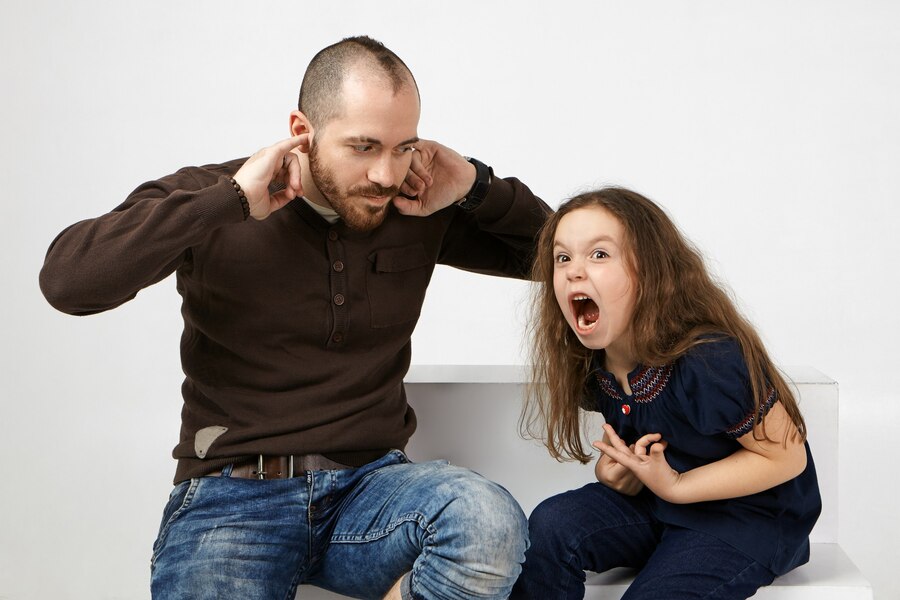
Handling Aggressive Behaviour in Children: Strategies and Solutions

Aggressive behaviour in children can be challenging for parents and caregivers. It often leads to frustration, confusion, and concern about the child’s well-being and future social interactions. Parents may feel overwhelmed and unsure about the best approach to take, which can create a stressful home environment. However, understanding the root causes of aggressive behaviour is the first step towards addressing and managing these issues effectively.
Aggressive behaviour in children can stem from a variety of factors, including emotional overwhelm, developmental stages, environmental influences, attention-seeking tendencies, imitation, and underlying medical or psychological conditions. By identifying and understanding these causes, parents and caregivers can tailor their approach to meet the specific needs of their child.
Implementing effective strategies can significantly reduce aggressive incidents and help children develop healthier ways of expressing their emotions. This involves a combination of setting clear boundaries, using positive reinforcement, teaching emotional regulation, and creating a supportive environment. Additionally, modeling appropriate behaviour and seeking professional help when necessary are crucial components of a comprehensive approach to managing aggression in children.

Understanding Aggressive Behaviour in Children
Aggressive behaviour in children can manifest in various forms, including hitting, kicking, biting, and verbal outbursts. It’s essential to recognize that such behaviour often stems from underlying issues rather than a child’s inherent nature.
Common Causes of Aggressive Behaviour
Emotional Overwhelm
Children may exhibit aggressive behaviour when they feel overwhelmed by emotions they don’t fully understand or know how to express. Feelings like frustration, anger, sadness, or even excitement can be too intense for them to handle, leading to outbursts.
Developmental Stages
Certain developmental stages, such as toddlerhood and adolescence, can be marked by increased aggression as children test boundaries and seek independence. During these periods, children may struggle with self-control and understanding the impact of their actions.
Environmental Factors
Stressful home environments, exposure to violence, and inconsistent discipline can contribute to aggressive behaviour in children. A chaotic or unpredictable home life can make children feel insecure and anxious, which can manifest as aggression.
Attention-Seeking
Sometimes, children act out aggressively to gain attention from parents or caregivers, even if it’s negative attention. They may feel that aggressive behaviour is the only way to get noticed.
Imitation
Children often mimic behaviours they observe in others, including parents, siblings, or media characters, leading to aggressive actions. If they see aggression being used to resolve conflicts, they may adopt similar strategies.
Medical and Psychological Conditions
Certain medical and psychological conditions, such as ADHD, autism, anxiety, and sensory processing disorders, can contribute to aggressive behaviour. These conditions can make it difficult for children to regulate their emotions and behaviour.
Effective Strategies for Handling Aggressive Behaviour
Stay Calm and Composed
When faced with aggressive behaviour, it’s crucial for parents to remain calm. Reacting with anger can escalate the situation and reinforce negative behaviour. Taking a deep breath and responding in a measured, calm manner helps to de-escalate tension.
Establish Clear Boundaries
Setting clear and consistent rules helps children understand what behaviour is acceptable. Reinforce these boundaries with consistent consequences for aggressive actions. For example, a child should know that hitting others will result in a time-out every time it happens.
Use Positive Reinforcement
Rewarding positive behaviour can encourage children to act appropriately. Praise, rewards, and attention for good behaviour can reduce the frequency of aggression. Highlighting moments when your child uses words instead of fists to express anger reinforces positive actions.
Teach Emotional Regulation
Help children identify and label their emotions. Teaching them coping mechanisms, such as deep breathing, counting to ten, or using a stress ball, can aid in managing their anger. Role-playing scenarios can also be effective in teaching appropriate responses to frustration.
Model Appropriate Behaviour
Children learn by example. Demonstrate calm and respectful behaviour, especially in conflict situations, to set a positive example. Show them how to handle frustration and anger without resorting to aggression.
Create a Safe Environment
Ensure that your child’s environment is safe and free from triggers that might provoke aggression. This includes reducing exposure to violent media and providing a calm, structured home setting. A predictable routine can also help children feel more secure and less prone to outbursts.
Seek Professional Help
If aggressive behaviour persists despite your efforts, consider seeking help from a child psychologist or therapist. Professional guidance can provide tailored strategies and support, helping you and your child navigate these challenges more effectively.
Practical Tips for Parents
Maintain Open Communication
Encourage your child to talk about their feelings and listen without judgment. Open communication helps children feel understood and supported. Ask open-ended questions and show empathy when they express their emotions.
Provide Physical Outlets
Ensure your child has opportunities for physical activity, which can help them release pent-up energy and reduce aggression. Activities like sports, dancing, or simply running around can be excellent outlets for excess energy and frustration.
Implement Time-Outs
Use time-outs as a way to help your child calm down. This break from the situation can prevent further escalation and provide a moment for reflection. Ensure time-outs are not punitive but rather a time for your child to regain control.
Develop Problem-Solving Skills
Teach your child problem-solving skills. Help them understand that there are peaceful ways to resolve conflicts and express their needs. Encourage them to think of solutions to conflicts that do not involve aggression.
Encourage Social Skills
Promote activities that build social skills, such as team sports or group activities. These experiences can teach cooperation, sharing, and empathy. Positive social interactions can reduce feelings of frustration and isolation that might lead to aggression.
Monitor and Adjust
Regularly assess your child’s behaviour and the effectiveness of your strategies. Adjust your approach as needed to continue supporting positive behaviour. Be patient and flexible, as what works for one child may not work for another.

Addressing Specific Aggressive Behaviours
Dealing with Physical Aggression
For children who exhibit physical aggression, such as hitting or biting, immediate intervention is necessary. Calmly separate the child from the situation and explain why the behaviour is unacceptable. Use simple and clear language to convey your message.
Managing Verbal Aggression
Verbal aggression, such as yelling or name-calling, can be addressed by teaching your child appropriate ways to express frustration. Encourage the use of “I” statements, like “I feel angry when…” This helps children take ownership of their feelings without blaming others.
Handling Tantrums
Tantrums are common in young children and often involve aggressive behaviour. Stay calm, ensure the child’s safety, and wait for the tantrum to subside before discussing the behaviour. After the tantrum, discuss what happened and what could be done differently next time.
Long-Term Solutions
Consistency is Key
Consistency in rules and consequences is crucial in managing aggressive behaviour. Ensure all caregivers are on the same page to avoid mixed signals. This consistency helps children understand the link between their actions and the outcomes.
Monitor Progress
Regularly assess your child’s behaviour and the effectiveness of your strategies. Adjust your approach as needed to continue supporting positive behaviour. Keeping a journal of incidents and interventions can help track patterns and progress.
Focus on Relationship Building
Strengthen your relationship with your child through quality time and positive interactions. A strong parent-child bond can reduce aggressive tendencies. Activities like reading together, playing games, or simply talking can reinforce this bond.
Conclusion
Handling aggressive behaviour in children requires patience, understanding, and consistent strategies. By identifying the causes of aggression and implementing practical solutions, parents can help their children develop healthier ways to express their emotions and interact with others. Remember, the goal is to guide children towards positive behaviour while providing the support and understanding they need to thrive.
Read Also: Unlock the Secrets of Child Behaviour Based on Birth Order